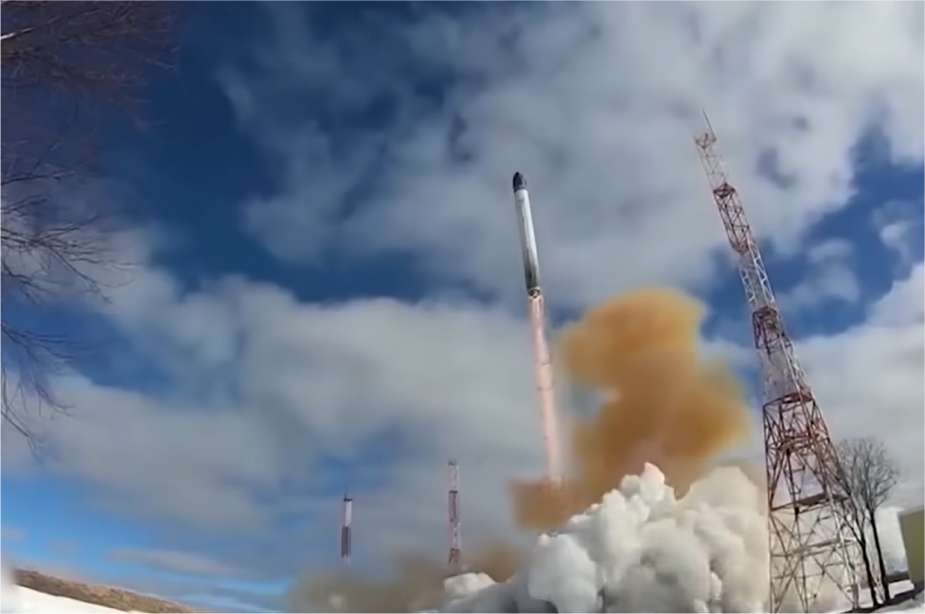Breaking news
Russia prepares for advanced testing of RS-28 Sarmat ICBM.
Russia is set to conduct a test of the RS-28 Sarmat missile, commonly known as Satan-2. This development, reported by Russian state media, marks a crucial phase in the missile's development, with a proposed test flight over the South Pole. The RS-28 Sarmat, a heavy intercontinental ballistic missile (ICBM), is remarkable for its massive scale.
Follow Army Recognition on Google News at this link

Previous test of Satan 2 missile (Picture source: Russian media)
The RS-28 Sarmat, also nicknamed Satan II and codenamed SS-X-30 by NATO, is a heavy intercontinental ballistic missile (ICBM) system developed by Russia. The announcement of its mass production was made by Russian President Vladimir Putin during a speech at the Valdai Debate Club in October 2023. This missile is considered the next generation of Russian ICBMs and underwent extensive testing in 2022. It is designed to carry 10 to 15 individually guided nuclear warheads.
The RS-28 Sarmat is a massive missile system, featuring an intercontinental liquid-fueled ballistic missile weighing over 200 tonnes. It aims to replace the Voevoda missiles, colloquially known as the 'Satan' missiles, in Russia's strategic arsenal. Its ability to carry 10 to 15 individually guided nuclear warheads could enhance Russia's nuclear capabilities. It was officially placed on combat duty on September 1, 2023.
One of the key strengths of the Sarmat is its potential ability to bypass current or future missile defense systems. It boasts an impressive range of 18,000 km, theoretically allowing it to target a wide range of locations worldwide. Moreover, its warheads are equipped with specialized equipment, which could make them difficult to detect during flight, both within the Earth's atmosphere and in space.
The missile consumes a significant amount of fuel at the start, but the stages separate, allowing the missile to retain energy. The third stage has four engines that develop a thrust of over 100 tons, potentially increasing the missile's range and making it challenging for hostile missile defenses to intercept it.
Despite these advancements, it is essential to note that the Sarmat has faced international scrutiny and skepticism. According to the US Analysis Center Nuclear Threat Initiative, Russia conducted at least 13 tests of this missile between 2017 and 2019, and some reports suggest these tests were not entirely successful, raising questions about the reliability and effectiveness of the weapon system.
Despite these concerns, the first regiment equipped with the 208-ton weapon is expected to be operational soon. The Russian state news agency TASS revealed plans for additional launches, including a test via the South Pole, a detail that was later removed from the public report but now seems to be confirmed.
President Putin previously stated that the RS-28 Sarmat, designed to evade air defenses by flying over the North or South Poles, is close to mass production and will soon be put into combat service. However, this has been delayed by more than a year from the initial schedule.
The RS-28 Sarmat is intended to replace the old Voevoda (Satan) missile, which has been in service since the 1980s. Despite the challenges and delays, the Russian leadership appears determined to advance testing of the RS-28 Sarmat over the South Pole, marking a significant milestone in its strategic missile program.



















